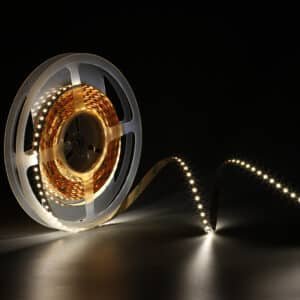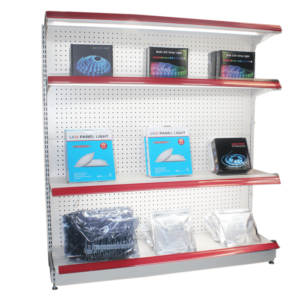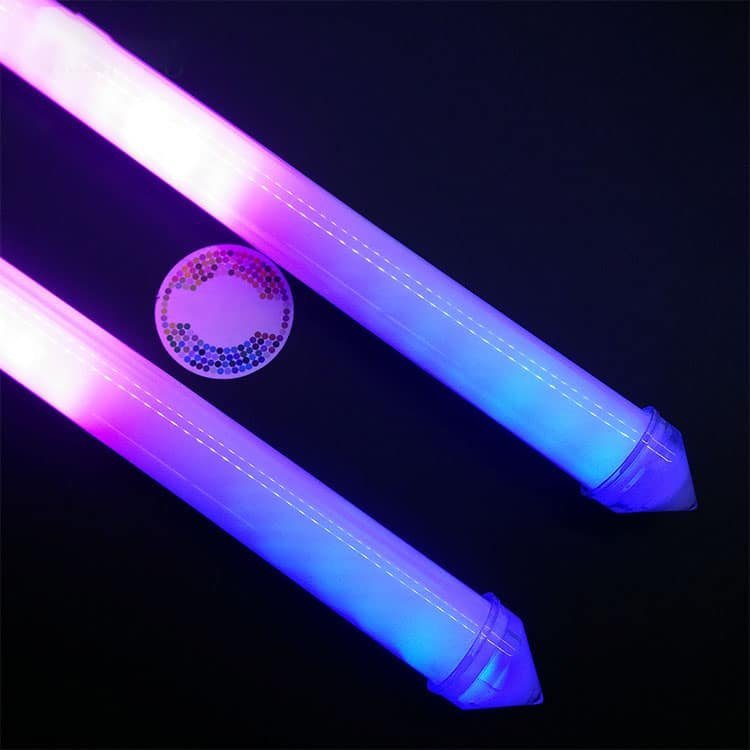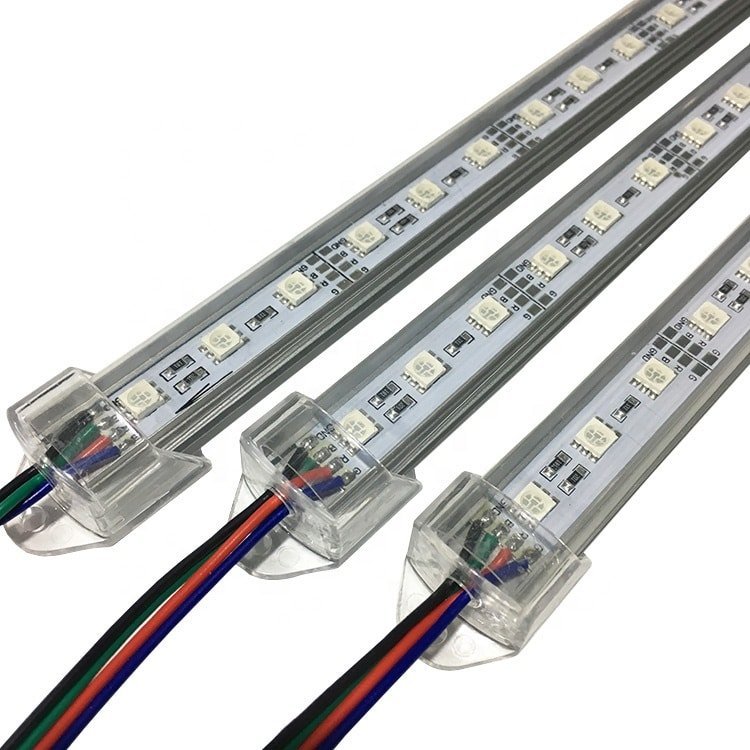An Introduction to LED lighting
Lighting plays an essential part in our daily lives, both enhancing the atmosphere of our homes and workplaces while increasing visibility. LED lighting has become increasingly popular due to its energy efficiency and long lifespan; rigid bars and flexible strips both offer distinct advantages depending on your particular requirements. In this blog post, we’ll examine their differences, including pros and cons so you can make an informed decision! So come join us as we shed some light on this exciting subject!
Differences between rigid LED bars and flexible LED strips
When it comes to LED lighting solutions, there are numerous choices available on the market. Two popular choices are LED rigid bars and flexible LED strips; although both provide efficient lighting solutions they have some key differences that set them apart.
LED rigid bars, as their name implies, consist of hard linear tubes housing multiple LEDs in order to focus and direct light output more precisely and directly. As their structure allows more focused illumination output from these lights than any other source – perfect for applications requiring task or accent illumination such as display cabinets and under-cabinet lighting in kitchens.
Flexible LED strips, on the other hand, consist of small individual LEDs connected by flexible circuitry that allows for simple installation on curved surfaces or around corners. Their light output spreads more evenly compared to rigid bars – perfect for lighting larger areas or creating decorative effects like backlighting effects.
LED rigid bars offer several distinct advantages over their flexible strip counterparts in terms of pros and cons: their rigid construction makes them more sturdy and long-term durable; plus they tend to produce brighter light output per unit length than flexible strips compared to flexible versions; however their inflexibility can make installation challenging in applications requiring curves or bends.
Flexible LED strips offer greater shape and layout flexibility due to their bendable nature, making them easy to cut to desired lengths and adjust according to specific requirements without needing additional tools for installation. Unfortunately, flexible strips may not be as strong or damage resistant than rigid bars, and may become vulnerable if mishandled during setup.
When selecting between these two options for your specific needs, several considerations must be made, such as intended application (task vs decorative lighting), desired brightness level (focused vs spread-out illumination), ease of installation (straightforward vs complex), budget constraints, energy efficiency needs and overall aesthetic preferences.
LED rigid bars have become an indispensable element of retail displays that showcase products with precision highlighting. Flexible LED strips have also proven themselves useful in architectural lighting applications as well as residential ambience creation and creative DIY projects.
Pros and Cons of LED Rigid Bars
LED rigid bars offer numerous advantages when it comes to lighting solutions, chief among them their durability and sturdiness. Constructed of strong materials like aluminum or stainless steel, rigid LED bars are highly resistant to damage while guaranteeing longer lifespan compared to flexible LED strips.
LED rigid bars offer another key advantage in terms of uniform lighting: their evenly distributed LEDs ensure even, uniform illumination across their entirety, eliminating dark spots or uneven lighting that might otherwise exist on other lighting sources. This makes them an excellent solution for retail displays or under cabinet lighting applications where even illumination is essential.
LED rigid bars tend to produce brighter light output than flexible LED strips, which may prove advantageous in areas that demand greater levels of illumination such as workstations or task lighting setups.
LED rigid bars do have their share of downsides, however. One limitation they share with flexible LED strips is their limited flexibility compared to them; rigid bars cannot bend or curve easily and therefore limit their use in situations that demand flexibility.
Installation can also be more difficult with LED rigid bars as they typically require mounting brackets or clips for secure attachment, requiring extra time and effort compared with flexible LED strips, which can simply be adhered to surfaces using adhesive backing.
Due to their larger size and solid construction, LED rigid bars may not fit as easily into tight spaces as flexible led strips do, restricting their applicability in situations with limited space available for application. This may limit their applications.
Though LED rigid bars offer durability and consistent illumination, there can be drawbacks associated with installation compared to flexible led strips. When choosing between them for your project requirements, be sure to take these factors into consideration as well as any specific needs into account.
Pros and Cons of Flexible LED Strips
Flexible LED strips have become increasingly popular in lighting due to their convenience and ease of installation. Their numerous benefits make them the choice of many users.
One of the many advantages of flexible LED strips is their flexibility, as their name suggests. This enables them to easily bend around corners or be folded over, making them perfect for installations in tight or irregular spaces. Furthermore, their thin and compact design make it simple to hide or blend seamlessly into any environment.
Flexible LED strips also boast superior energy efficiency. Like their LED counterparts, flexible strips consume far less power while producing vibrant illumination – an advantage which not only saves electricity bills but contributes to creating a greener and more eco-friendly future.
Flexible LED strips come in an assortment of colors, giving you the power to create dynamic lighting effects or set specific moods according to your personal tastes and needs. From task-oriented areas like kitchens to cozy living spaces – flexible LED strips have something suitable for every setting!
Like any product on the market, flexible LED strips also have some potential drawbacks that should be taken into account before making a purchasing decision. One such drawback could be their limited lifespan when compared with rigid bars; constant bending and flexing may cause wear-and-tear to shorten its lifecycle over time.
Additionally, as these LED strips consist of individual LEDs rather than larger modules found in rigid bars, there may be slight variations in color consistency throughout their length. While these variations might be undetectable under normal circumstances, they may become apparent for certain applications that demand uniformity of illumination.
Flexible LED strips remain an ideal solution for a range of uses, from accenting furniture pieces or under cabinets with an eye-catching backlight effect to creating stunning backlighting effects behind TVs or mirrors. Despite its limitations, flexible LED strips remain an effective lighting solution in various applications. They make a fantastic accent piece behind furniture or behind cabinets or even creating breathtaking backlighting effects behind TVs or mirrors.
Flexible LED strips clearly present numerous advantages, including their flexibility, energy efficiency and color options.
Factors to Keep in Mind when Selecting LED Rigid Bars or Flexible LED Strips
When choosing between LED rigid bars and flexible LED strips, several key factors must be taken into account. First and foremost is your space’s individual lighting requirements: for instance if task-oriented illumination is desired then rigid bars might provide better direct illumination as they offer linear solutions.
If you require flexible lighting that can easily bend to fit different shapes or surfaces, flexible LED strips may be a better fit. These strips can be cut into segments at designated intervals to enable more flexible installation.
Another factor is ease of installation. Although both options are fairly easy to set up compared to traditional lighting fixtures, flexible LED strips often prove easier due to their adhesive backing which allows them to be attached directly onto surfaces like cabinets or shelves without needing additional hardware.
Also consider energy efficiency and lifespan when making your decision. LEDs are well-known for their energy-saving capabilities and long lifespan. Both options offer these benefits, though specific models within each category may vary in terms of brightness levels or efficiency ratings.
Budget should always be taken into account when making any purchase decision, and flexible LED strips tend to be more cost-effective than rigid bars due to different production processes and materials used.
Choose LED rigid bars or flexible LED strips depending on your individual lighting needs, desired effect, installation ease and other considerations.
Applications of LED Rigid Bars and Flexible LED Strips
LED lighting has revolutionized our homes, workplaces and outdoor spaces alike. Knowing their applications will enable you to make an informed decision between rigid bars and flexible strips when making an illumination selection decision.
LED rigid bars are commonly utilized in commercial settings where bright and targeted illumination are necessary, such as kitchen under-cabinet lighting or retail display cases. Their rigid construction enables them to illuminate specific areas or objects precisely.
Flexible LED strips offer unparalleled versatility. Their ability to bend and conform makes them the perfect accent lighting solution in residential spaces such as bedrooms or living rooms, easily attaching behind furniture, along staircases or creating unique patterns on ceilings or walls.
Both options find extensive use in architectural projects as well, where flexible LED strips add a creative element by emphasizing curves or producing stunning visual effects. Furthermore, both rigid bars and flexible strips have made great additions to automotive customization by adding stylish accents inside vehicles or motorcycles.
Events and entertainment demand lighting solutions that truly illuminate any venue – concerts, stage productions, nightclubs and weddings can all benefit from using flexible lighting options to transform their spaces into engaging experiences.
Your choice of LED rigid bars or flexible strips depends on your personal needs and preferences, including factors like installation ease, desired light output intensity, available colors options and budget constraints when making this decision.
Never forget: there is no one-size-fits-all answer! Spend ample time exploring various possibilities before selecting one that meets all your specific requirements.
Conclusion: Which is better for your specific needs?
When it comes to selecting between LED rigid bars and flexible LED strips, there is no definitive answer as to which is better. Both have their own distinct advantages and disadvantages that may make them suitable for certain applications.
LED rigid bars deliver more focused and concentrated light output, making them suitable for task lighting or accent lighting in specific areas. Easy to install and with excellent heat dissipation capabilities, rigid bars limit installation options due to their rigid nature.
Flexible LED strips offer unparalleled versatility and adaptability. Their bendy nature enables them to conform easily around corners or irregular surfaces, giving creative lighting designers plenty of ways to use these flexible lights – from backlighting displays or creating ambient mood lighting, all the way down to easier installation in tight spaces.
When selecting the optimal option for you, take into account factors like application area, desired flexibility level, brightness requirements, power consumption preferences and budgetary concerns.
LED rigid bars may provide precise lighting with limited installation restrictions or work on projects requiring high levels of brightness without too much bending required – making them the ideal solution for precise directional illumination with minimum installation restrictions and requirements.
However, flexible LED strips would likely provide greater versatility and ease of installation while creating lighting designs to conform to any surface – they offer unparalleled creativity!
Take some time to carefully consider your needs before making a decision about lighting for your space. Both rigid LED bars and flexible LED strips have their own set of strengths that may or may not meet them; so take your pick – whatever option you choose will bring illumination into your life!







